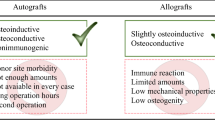Abstract
Hydroxyapatite, (HAp), Ca10(PO4)6(OH)2, is a naturally occurring mineral found in the inorganic component of enamel and human bone, consequently the present research focus is its ability to promote bone growth onto femoral implants when the HAp powder is sprayed using plasma thermal spraying. As the sprayed deposit requires certain mechanical and biological performances, the characteristics of the starting HAp powder will provide these properties. Hap powders were synthesized via a wet chemical precipitation technique using a Fractional Factorial, Resolution IV, two-level experimental design to evaluate the critical process parameters (reagent addition rate, reaction temperature, stirring speed, ripening time, initial calcium concentration, and the presence of an inert atmosphere) and their effect (main and interaction) on the final HAp powder characteristics, such as, phase composition, purity, crystallinity, crystallite size, lattice parameters, particle size, and particle size distribution. All six selected variables investigated, showed an influence (either as a minor or major significance) on one or more of the responses investigated, either as a main or interaction effect. However, both the ripening time and the stirring speed were found to significantly affect the majority of the five responses, with the reaction temperature also having a significant effect on the final phase composition, lattice parameters, and particle size.









Similar content being viewed by others
References
V. Palka, E. Postrkova, and H.K. Koerten, Some Characteristics of Hydroxylapatite Powder Particles after Plasma Spraying, Biomaterials, 1998, 19(19), p 1763–1772
S.J. Kalita, S. Bose, H.L. Hosick, and A. Bandyopadhyay, CaO–P2O5–Na2O-Based Sintering Additives for Hydroxyapatite (HAp) Ceramics, Biomaterials, 2003, 25(12), p 2331–2339
S.W.K. Kweh, K.A. Khor, and P. Cheang, The Production and Characterization of Hydroxyapatite (HA) Powders, J. Mater. Process. Technol., 1999, 89–90, p 373–377
A.D. Papargyris, A.I. Botis, and S. Papargyri, Synthetic Routes for Hydroxyapatite Powder Production, Key Eng. Mater., 2002, 206–213, p 83–86
S. Koutsoploulos, Synthesis and Characterization of Hydroxyapatite Crystals: A Review Study on the Analytical Methods, J. Biomed. Mater. Res., 2002, 15, p 600–612
N. Kivrak and C. Tas, Synthesis of Calcium Hydroxyapatite Tricalcium Phosphate (HA-TCP) Composite Bioceramic Powders and Their Sintering Behavior, J. Am. Ceram. Soc., 1998, 81, p 2245–2252
J.L. Xu, K.A. Khor, Z.L. Dong, Y.W. Gu, R. Kumar, and P. Cheang, Preparation and Characterization of Nano-Sized Hydroxyapatite Powders Produced in a Radio Frequency (rf) Thermal Plasma, Mater. Sci. Eng. A, 2004, 374, p 101–108
R. Kumar, P. Cheang, and K.A. Khor, RF Plasma Processing of Ultra-Fine Hydroxyaptite Powders, Mater. Process. Technol., 2001, 113, p 456–462
U.S. Food and Drug Administration, Calcium Phosphate (Ca-P) Coating Draft Guidance for Preparation of FDA Submissions for Orthopaedic and Dental Endosseous Implants, 1992
ASTM F1609, Standard Specification for Calcium Phosphate Coatings for Implantable Materials, American Society for Testing and Materials, 2003
ISO 13779-1, Implants for Surgery: Hydroxyapatite—Part 1: Ceramic Hydroxyapatite, International Standards Organisation, 2000
ASTM F1185, Standard Specification for Composition of Hydroxylapatite for Surgical Implants, American Society for Testing and Materials, 2003
T.S.S. Kumar, I. Manjubala, and J. Gunasekaran, Synthesis of Carbonated Calcium Phosphate Ceramics Using Microwave Irradiation, Biomaterials, 2000, 21, p 1623–1629
A. Afshar, M. Ghorbani, N. Ehsani, M.R. Saeri, and C.C. Sorrell, Some Important Factors in the Wet Precipitation Process of Hydroxyapatite, Mater. Lett., 2003, 57, p 197–202
M.R. Saeri, A. Afshar, M. Ghorbani, N. Ehsani, and C.C. Sorrell, The Wet Precipitation Process of Hydroxyapatite, Mater. Lett., 2003, 57, p 4064–4069
J.F. Conn and L.A. Jessen Process for Producing Hydroxyapatite, Patent Number: US 4,324,772, 1982
I. Smiciklas, A. Onjia, and S. Raicevic, Experimental Design Approach in the Synthesis of Hydroxyapatite by Neutralization Method, Sep. Purif. Technol., 2005, 44, p 97–102
S. Lazic, S. Zec, N. Miljevic, and S. Milonjic, The effect of Temperature on the Properties of Hydroxyapatite Precipitated from Calcium Hydroxide and Phosphoric Acid, Thermochim. Acta, 2001, 374, p 13–22
R. Kumar, K.H. Prakash, P. Cheang, and K.A. Khor, Temperature Driven Morphological Changes of Chemically Precipitated Hydroxyapatite Nanoparticles, Langmuir, 2004, 20, p 5196–5200
A. Tampieri, G. Celotti, S. Sprio, and C. Mingazzini, Characteristics of Synthetic Hydroxyapatites and Attempts to Improve Their Thermal Stability, Mater. Chem. Phys., 2000, 64, p 54–61
K. Rogers, The Use of Diffraction for the Analysis of Biomaterials, 2nd Annual Biomaterials Workshop, Cranfield University, UK, 2004
Design-Expert Software, Version 7.1, User’s guide, Technical Manual, Stat-Ease Inc., Minneapolis, MN, 2007
M. Giulietti, M.M. Seckler, S. Derenzo, M.I. Re, and E. Cekinski, Industrial Crystallisation and Precipitation from Solutions: State of the Technique, Brazil. J. Chem. Eng., 2001, 15, p 423–440
M.M. Seckler, M. Danese, S. Derenzo, J.V. Valarelli, M. Giulietti, and R. Rodríguez-Clemente, Influence of Process Conditions on Hydroxyapatite Crystallinity Obtained by Direct Crystallization, Mater. Res., 1999, 2(2), p 59–62
C. Liu, Y. Huang, W. Shen, and J. Cui, Kinetics of Hydroxyapatite Precipitation at pH 10 to 11, Biomaterials, 2001, 22, p 301–306
Y.X. Pang and X. Bao, Influence of Temperature, Ripening Time and Calcination on the Morphology and Crystallinity of Hydroxyapatite Nanoparticles, J. Eur. Ceram. Soc., 2003, 23, p 1697–1704
J. Liu, X. Ye, H. Wang, M. Zhu, B. Wang, and H. Yan, The Influence of pH and Temperature on the Morphology of Hydroxyapatite Synthesised by Hydrothermal Method, Ceram. Int., 2003, 29, p 629–633
L.L. Hench, J. Wilson, An Introduction to Bioceramics, Advanced Series in Ceramics, Vol 1 World Scientific Publishing Co. Pte. Ltd., London, Hong Kong, Singapore, 1998, p 139–80
Acknowledgment
This study is supported under the EMBARK Initiative Scheme by the Irish Research Council for Science and Engineering (IRCSET).
Author information
Authors and Affiliations
Corresponding author
Rights and permissions
About this article
Cite this article
Kehoe, S., Ardhaoui, M. & Stokes, J. Design of Experiments Study of Hydroxyapatite Synthesis for Orthopaedic Application Using Fractional Factorial Design. J. of Materi Eng and Perform 20, 1423–1437 (2011). https://doi.org/10.1007/s11665-010-9704-3
Received:
Revised:
Published:
Issue Date:
DOI: https://doi.org/10.1007/s11665-010-9704-3




